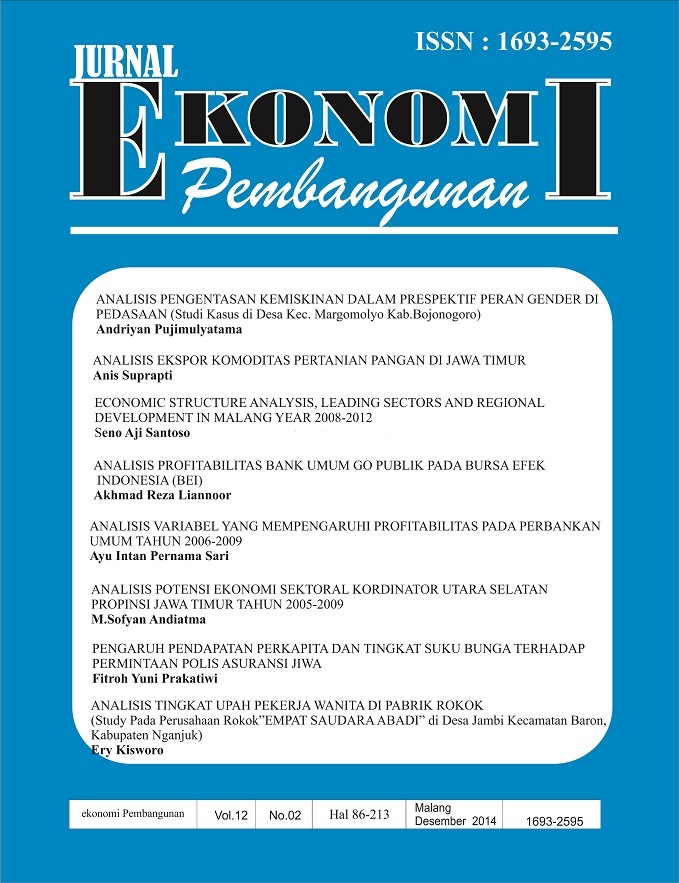ANALISIS PENGENTASAN KEMISKINAN DALAM PRESPEKTIF PERAN GENDER DI PEDESAAN (Studi Kasus di Desa Kalangan Kec. Margomulyo Kab. Bojonegoro)
DOI:
https://doi.org/10.22219/jep.v12i2.3657Keywords:
Poverty Alleviation, Gender Perspective, Wife IncomeAbstract
The objectives of this study were 1) to determine the characteristics of poor households in the village districts circles. Margomulyo Kab. Bojonegoro. 2) To determine the influence of age, education and gender roles to the family income. 3) To determine whether there is a significant difference in income after the role of gender in poor households. This study uses primary data obtained from questionnaires with 53 poor households. The analytical tool used is multiple regression with dummy variables and different test average. The results of 53 studies that poor households 23 respondents or 43% of elementary education (SD), 20 respondents or 38% had not compleceted elementary school (SD) and 10 respondents or 19% educated Junior High School (SMP). Types of jobs available 100 respondents 53% peasants’livelihood. Working hours in a day on average 7-9 hours. Wages earned Rp 20,000 to Rp 30,000 per day and for women workersor wives who work at Rp 20,000 to Rp 25,000 per day. Education elementary and junior high school education has no statistically significant effect on the family income of poor households, while age and gender roles have a statistically significant influence on the family income of poor households, if age is 1 (productive) it will add to the family income by Rp. 4683.643. Gender roles if the values is 1 (any gender roles) it will add to the family income by Rp. 24624.815. And there is a difference between family income existing gender roles and no gender roles.
Downloads
Downloads
Published
Issue
Section
License
Authors who publish with Jurnal Ekonomi Pembangunan (JEP) agree to the following terms:
- For all articles published in Jurnal Ekonomi Pembangunan (JEP), copyright is retained by the authors. Authors permit the publisher to announce the work with conditions. When the manuscript is accepted for publication, the authors agree to the publishing right's automatic transfer to the publisher.
- Authors retain copyright and grant the journal right of first publication with the work simultaneously licensed under a Creative Commons Attribution-NonCommercial-ShareAlike 4.0 International License that allows others to share the work with an acknowledgment of the work's authorship and initial publication in this journal.
- Authors can enter into separate, additional contractual arrangements for the non-exclusive distribution of the journal's published version of the work (e.g., post it to an institutional repository or publish it in a book), with an acknowledgment of its initial publication in this journal.
- Authors are permitted and encouraged to post their work online (e.g., in institutional repositories or on their website) before and during the submission process, as it can lead to productive exchanges and earlier and greater citation of published work (See The Effect of Open Access).

This work is licensed under a Creative Commons Attribution-NonCommercial-ShareAlike 4.0 International License.






















